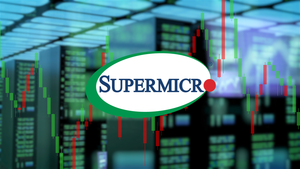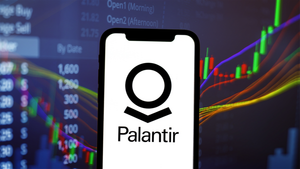
The global technology landscape is undergoing a seismic shift driven by an intense and escalating competition in Artificial Intelligence. Tech titans like NVIDIA (NASDAQ: NVDA), Microsoft (NASDAQ: MSFT), and Google (NASDAQ: GOOGL) are locked in a fierce battle across AI chip development, sophisticated model creation, and cloud services, fundamentally reshaping the tech stock market and sparking a debate over the sustainability of current valuations. This AI gold rush is propelling some companies to unprecedented market capitalizations while creating new challenges and opportunities across the entire industry.
This high-stakes contest has immediate implications, with a surge in investment, rapid innovation, and a palpable sense of urgency as companies strive to secure their position in the AI-powered future. The market is reacting with both fervent enthusiasm and cautious speculation, as investors weigh the transformative potential of AI against the inherent risks of intense competition, high capital expenditures, and evolving regulatory landscapes.
The AI Revolution: A Defining Moment for Technology and Finance
The current AI competition is a multifaceted phenomenon, characterized by relentless technological advancements in both hardware and software, aggressive strategic maneuvers by key players, and an undeniable shift in market dynamics. The foundational element of this revolution lies in AI chips, the specialized processors designed for machine learning and deep learning tasks. NVIDIA, with its dominant market share (estimated 70-95% in data center GPUs) and its pervasive CUDA software platform, remains the undisputed leader. Its Hopper (H100) and new Blackwell (B200) architectures continue to set performance benchmarks, with CEO Jensen Huang predicting global AI infrastructure spending could skyrocket to $3 trillion to $4 trillion by the end of the decade.
However, NVIDIA's dominance is facing growing challenges. Advanced Micro Devices (NASDAQ: AMD) is emerging as a formidable contender with its Instinct MI series accelerators, while hyperscale cloud providers like Google, Amazon (NASDAQ: AMZN), and Microsoft are strategically investing in developing their own custom AI chips to reduce reliance on third parties. Google is heavily investing in its Tensor Processing Units (TPUs), Microsoft announced its Azure Maia AI accelerator chips, and Amazon is developing Trainium and Inferentia. This vertical integration aims to optimize for specific AI workloads, lower costs, and gain greater control over their technology infrastructure.
The timeline of major events underscores the rapid acceleration of AI development. Late 2022 saw the public launch of OpenAI's ChatGPT, which quickly captured global attention. This was followed by a flurry of announcements in 2023, including OpenAI's GPT-4, Google's Bard (later unified under the Gemini brand), and Microsoft's integration of AI across its productivity suite with Microsoft 365 Copilot. 2024 has continued this pace, with Google launching Gemini 1.5 Flash, OpenAI introducing GPT-4o, and Microsoft sealing a massive multi-billion-dollar deal with Nebius for GPU capacity. The competitive landscape extends fiercely into AI software and foundation models, with players like OpenAI (ChatGPT), Google (Gemini), Anthropic (Claude), and Meta (NASDAQ: META) (LLaMA) constantly pushing the boundaries of generative AI capabilities.
Initial market reactions have been overwhelmingly positive, signaling an "AI gold rush." Innovations in AI have fueled substantial stock price gains for US technology companies, with NVIDIA becoming the first to reach a $4 trillion capitalization in early July, followed by Microsoft three weeks later. The top ten US tech companies now account for one-third of total US stock market capitalization, reflecting intense investor enthusiasm and high growth expectations. However, this enthusiasm is tempered by increased volatility and concerns about the sustainability of these high valuations, particularly given uncertainties around the return on massive capital expenditures for AI infrastructure and intensifying competition.
The Shifting Sands: Who Wins and Who Risks Losing in the AI Race
The intense AI competition is creating clear winners and losers, fundamentally altering business models and future prospects across the tech ecosystem.
NVIDIA (NASDAQ: NVDA) remains a colossal winner, primarily due to its near-monopoly in AI GPUs and the robust CUDA software platform. With an estimated 70-95% market share in AI semiconductors for data centers, NVIDIA's data center segment revenue surged by 142% year-over-year to $115.2 billion in fiscal year 2025. Its continuous innovation with new GPU architectures like Blackwell and Rubin cements its position as the foundational infrastructure provider. However, its long-term dominance, especially in inference workloads, is expected to face gradual erosion as hyperscalers develop custom silicon.
Hyperscale cloud providers such as Google (NASDAQ: GOOGL), Microsoft (NASDAQ: MSFT), and Amazon Web Services (NASDAQ: AMZN) are also significant winners. They provide the essential cloud infrastructure and AI-as-a-Service offerings that are critical for AI development and deployment. Google leverages its Gemini models and Vertex AI, along with its custom Tensor Processing Units (TPUs). Microsoft, through its Azure OpenAI Service, GitHub Copilot, and Microsoft 365 Copilot, is deeply integrated with OpenAI's cutting-edge models and is developing its own Azure Maia 100 AI accelerator. Amazon, with AWS, offers services like SageMaker and Bedrock and develops custom AI chips like Trainium and Inferentia. These companies monetize AI through their cloud platforms, enterprise footprints, and developer ecosystems, integrating AI as a core feature within their existing services.
Advanced Micro Devices (NASDAQ: AMD) is emerging as a strong challenger, particularly in data centers and edge AI, offering competitive performance and an open-source software stack with its Instinct MI300 AI accelerators. Companies specializing in custom silicon, like Broadcom (NASDAQ: AVGO), are also gaining prominence, with Broadcom's AI chip revenue surging, particularly through partnerships with major AI developers. AI software and service providers such as OpenAI, Anthropic, Salesforce (NYSE: CRM), and Palantir (NYSE: PLTR) thrive by offering specialized AI models, APIs, and platforms, though they face challenges related to dependence on partners and solidifying their unique value propositions amidst intense competition.
On the flip side, some sectors and companies face significant challenges. Traditional online publishers and SEO agencies are experiencing significant drops in click-through rates as Google's AI Overviews provide AI-generated summaries directly in search results, undermining their ad revenue models. Legacy tech firms slow to adopt AI risk obsolescence, as the rapid pace of innovation demands constant adaptation. Companies with business models easily undermined by AI, such as education technology companies like Chegg (NYSE: CHGG), which saw its share price plummet after its core proposition was challenged by ChatGPT, or client services and customer care firms like Concentrix (NASDAQ: CNXC) and Teleperformance (OTCMKTS: TLEPF), which face threats from generative AI automating low-complexity tasks, are also vulnerable. Intel (NASDAQ: INTC), despite its broader AI ambitions, is playing catch-up in the high-end data center AI accelerator market against NVIDIA's established ecosystem and hyperscalers' custom silicon efforts, making it a relative loser in this specific segment. Finally, smaller, undercapitalized AI startups face intense competition from tech giants, high computational costs, and challenges in acquiring top talent and quality data.
AI's Broad Strokes: Industry Impact and Global Implications
The intense AI competition is far more than a corporate skirmish; it's a foundational force accelerating broader industry trends, creating ripple effects across the global economy, and demanding a proactive stance from regulators and policymakers. AI is inextricably linked with the ongoing waves of digitalization and automation, serving as a primary accelerator. Its capacity to process and analyze vast data optimizes operations, anticipates market trends, and enhances decision-making across all sectors, from manufacturing to personalized customer experiences. This integration expands organizational cognitive bandwidth, driving unprecedented productivity gains and potentially adding trillions to global GDP annually.
The ripple effects of this competition are profound. AI has the potential to lead to the creation of "super firms" and increased market concentration, as tech giants leverage immense resources to reinforce their dominance. Studies indicate that AI often benefits large firms, potentially amplifying economic inequality and stifling innovation from smaller players. High AI model training costs create significant barriers for startups, often necessitating "co-opetition" agreements with big tech firms to access crucial computing infrastructure. These partnerships, while essential for startups to scale, are under close scrutiny from competition authorities globally, who fear they might become "Trojan horses" for dominant firms to exert leverage and reduce competition. Regulators are seeking to ensure these agreements do not lead to anticompetitive practices or stifle the emergence of new market leaders.
Regulatory and policy implications are rapidly evolving. Antitrust concerns are paramount, with authorities investigating potential issues such as algorithmic collusion, self-preferencing by vertically integrated providers, and predatory pricing. The worry is that AI algorithms could autonomously coordinate collusive behavior, challenging existing legal frameworks. Data privacy is another critical area; increased AI competition can exacerbate issues of surveillance, manipulation, and disinformation. Policymakers are urged to implement strong privacy laws to ensure competition drives a "race to the top" in privacy rather than a "race to the bottom." Furthermore, AI is recognized as critical for national security, with military superiority potentially hinging on AI capabilities. The global competition in AI is seen as an important national security objective, and antitrust actions against leading AI firms could have national-security ramifications.
Historically, the current AI competition draws comparisons to past technological shifts, such as the internet's emergence or even the electrification of the world. However, many experts suggest AI is evolving faster and its impact is more pervasive, reshaping nearly every industry. The battle for AI dominance among tech giants mirrors historical "format wars" like VHS vs. Betamax or smartphone OS wars. Key patterns from these past battles are evident: network effects, the potential for underdogs to challenge early leaders, and the crucial importance of building thriving ecosystems of developers and partners around the technology. There's a concern that, even more so than past platform markets, the AI ecosystem may inherently tend towards a monopoly or oligopoly, making decisive regulation crucial to protect competition and prevent harms.
The Horizon: What Comes Next in the AI Era
The future of the AI market, propelled by intense competition, promises continued transformative growth alongside significant strategic shifts and emerging challenges. Short-term, until 2030, the market will witness intensified AI adoption across all sectors, with generative AI leading the expansion of the global AI software market to an estimated $467 billion. The emergence of "agentic AI" in 2025, capable of autonomous task execution, is expected to introduce new efficiencies and complexities in governance. Businesses globally are prioritizing AI investment, with 85% planning increased spending in the next 12 months, viewing AI as a core strategic imperative for sustained success.
Long-term, beyond 2030, AI's economic impact is projected to be monumental, potentially contributing $15.7 trillion to the global economy by 2030 and increasing global productivity by 40%. AI is poised to become a general-purpose technology, akin to electricity or the internet, fundamentally reshaping industries from healthcare to finance, manufacturing, and retail. The most valuable businesses of the next decade are expected to be those built with AI at their foundation, rather than as an add-on. This vision entails widespread adoption, improving productivity across many sectors, and creating new industries entirely.
Companies are implementing significant strategic pivots to navigate this landscape. This includes heavy investment in AI infrastructure, software, and operational integration, often with substantial capital expenditures (CapEx) on private cloud compute initiatives. Diversification of AI investments and ecosystem building are paramount, with companies like Microsoft expanding partnerships to reduce reliance on single providers and foster open standards. Targeted Mergers & Acquisitions (M&A) will be a key strategy for growth and differentiation, as seen with Apple's (NASDAQ: AAPL) focus on acquiring specialized AI firms. Companies are also leveraging their core strengths, focusing on high-growth areas like generative AI and enterprise AI, and increasingly emphasizing responsible AI leadership and compliance with evolving regulations to build trust.
Emerging markets present unique opportunities for AI applications, allowing them to leapfrog traditional development stages in sectors like agriculture, tourism, and finance. However, challenges include the risk of widening global divides if AI development remains highly concentrated in wealthy nations. The industry could see several outcomes: continued exponential growth driven by innovation; further consolidation through M&A, potentially leading to an oligopoly; significant regulatory intervention to address antitrust, data privacy, and ethical concerns; and even temporary technological plateaus where the focus shifts from groundbreaking models to refinement and practical integration.
Conclusion: Navigating the AI Frontier
The intense competition in Artificial Intelligence is not merely a fleeting trend but a transformative force that has profoundly reshaped the tech stock market and will continue to redefine the global economic landscape for decades to come. It has ushered in an era of unprecedented innovation and investment, particularly in AI infrastructure, while also bringing to the forefront critical debates about market valuations and the equitable distribution of AI's benefits.
Key takeaways reveal a market driven by the insatiable demand for AI chips and cloud services, with companies like NVIDIA (NASDAQ: NVDA), Microsoft (NASDAQ: MSFT), and Google (NASDAQ: GOOGL) leading the charge in both hardware and software development. While this has propelled their valuations to record highs, investor scrutiny is growing regarding the tangible return on investment from massive AI expenditures. The market is in the nascent stages of an AI computing revolution, with tremendous financial and economic benefits yet to be fully realized, promising a long-term growth trajectory that could see the AI market reach nearly $20 trillion by 2030.
Moving forward, the market's direction will hinge on companies' ability to translate AI investments into demonstrable value and profitability. The focus will shift towards agentic AI, custom silicon, and strategic partnerships, all while navigating increasing regulatory oversight and global competition. AI is fundamentally changing industries, creating new "end markets" for personal AI assistants, enterprise-wide adoption, and integration into the physical world through robotics and autonomous systems. This transformation promises enhanced productivity and efficiency but also necessitates thoughtful approaches to safety, governance, and workforce adaptation.
Investors in the coming months should adopt a discerning approach. It is crucial to scrutinize quarterly earnings reports for tangible evidence of AI-driven revenue growth and profitability, moving beyond mere hype. Monitoring capital expenditure (CapEx) and the return on investment (ROI) of new AI product integrations will be paramount. Focusing on "picks and shovels" companies—those providing the essential tools and infrastructure like data center providers and semiconductor manufacturers—may offer more stable opportunities. Diversification across various AI-impacted sectors and a healthy skepticism towards overvalued stocks, while acknowledging the long-term potential of AI, are advisable. Furthermore, investors must keep a keen eye on geopolitical developments and evolving regulatory frameworks, as these will significantly influence the operational landscape and profitability of AI companies globally. The AI frontier offers immense growth opportunities, but navigating its inherent risks requires a strategic, informed, and long-term investment perspective.





